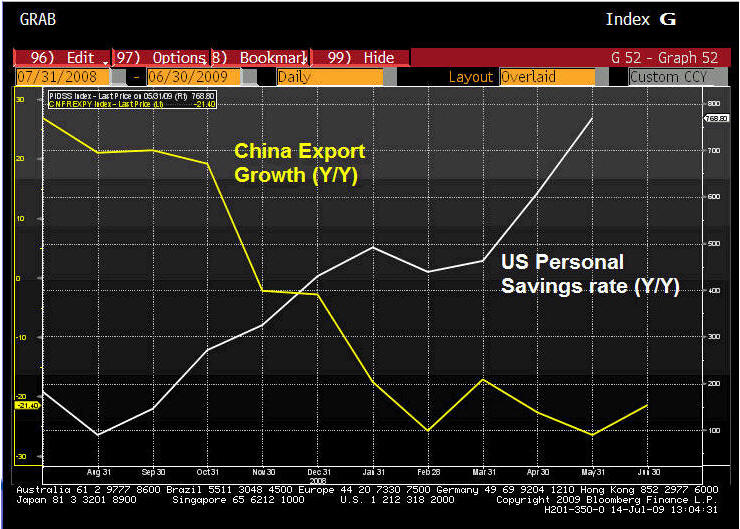

9/04/2009
What can we learn from the insight that the

As the global recession reached its depths,
To replace export growth,
As you might believe, many people believe this rapid expansion of lending will have serious consequences later. The Chinese government seeks to achieve an 8% growth rate to offset the affects of the falling exports. The expansion in lending has several results, some good and some bad. On the positive side, it encourages growth in consumption as more Chinese move into the middle class. This in turn helps the Chinese economy to continue to grow, while it stabilizes the political environment. It also funds further development of infrastructure that is a part of the large government stimulus program. According to the central government, almost 70% of the $586 billion stimulus package goes into infrastructure.
All this spending is intended to help offset the falling
exports and keep the Chinese economic miracle on track. There is a good chance
the massive expansion in credit will result in a new debt bubble. Professor
Pettis expects this might happen in a couple of years. In the mean time
What about the
If you are one of those people who have a job paid for by the stimulus, you will tend to put any extra you earn into a rainy day savings, as you remain worried about the longevity of the job at hand. You cannot blame people for saving more. In fact, longer term it will turn out to be a positive as higher savings provides capital for growth, money to help fund the growing U.S. debt and a cushion against another economic recession.
The question on many economists’ minds, will this higher savings rate be sustainable? I believe it will. First, they remember what happened either to them or to their parents and they do not want to see that happen again. Second, as evidence is showing from the “cash for clunkers” program, money spent on new cars is reducing spending on other consumer durable goods such as household appliances. There is just so much money to go around.
Third, the younger generation has seen first hand what happens when people spend too much and many are determined to be more reasonable in the future. Thank the green movement, as well as the extravagances of the 1990’s and 2000’s. In addition, college students have sizeable loans that they must pay off. Earlier generations did not face such a large debt when they started their work career after graduating from college.
All of these factors will help to sustain the higher
savings rate in the
As mentioned at the beginning of this article, the
expansion of
For those who want to learn more I suggest reading:
Ahead of the Curve: A Commonsense Guide to Forecasting Business
and Market Cycles![]() by Joe Ellis is an excellent book on how to predict macro moves
of the market.
by Joe Ellis is an excellent book on how to predict macro moves
of the market.